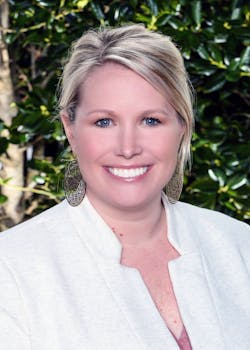Co-op Allowances: Boosting Marketing Budgets Across the HVACR Channel
All parts of the HVAC industry use advertising allowances or rebates. They may be called a marketing co-op allowance, promotional allowance, co-op marketing funds or MDFs (Market Development Funds). Manufacturers, distributors, wholesalers, or retailers can use some or all of them to reach their target markets in a cost-effective manner.
The Advantage
“Any time you can use someone else’s money to double your buying power, it is well worth it,” says Andy Fracica, former director of marketing at WaterFurnace International. The firm manufactures and distributes geothermal and water source heating and cooling systems. He explains: "The marketing teams will have vetted the approved marketing/advertising channels. So if a dealer can spend $1,000 and the manufacturer puts in a $1,000 allowance, then the dealer realizes a value of more than $2,000. That’s because you have to look at it this way: If multiple dealers in the same area are participating in a co-op allowance program, the public will hear or see the same marketing materials over and over again.”
Fracica offers this additional insight into the value of that frequency: “It generally takes 4-6 touches before advertising begins to register with the public, and then the qualifying factor is if they have an interest or a need, otherwise it is completely ignored. The dealer will generally say ‘My competitor is using the same program, so they are going to get the leads.’ This is inaccurate, because the homeowner will go out and research dealers and find the one, they think, is the best fit for them.”
Fracica’s conclusion: “Even if the homeowner only sees one advertisement or commercial, most will do the research to see who else is offering the promotion or whatever the deal is if they are interested. That is the key: There already has to be interest and a need on the part of the consumer.”
'When the restrictions are too great, contractors will pass on the co-op and everyone loses,' says Matt Michel.
Co-op advertising allowances serve a key purpose, says Matt Michel, president of Service Nation Inc. and the Service Roundtable, a leading HVAC contractorMichel has this advice: “Manufacturers need to make their co-op programs flexible and drive approval levels down as low as possible in the organization. Remember the purpose is to help move product.”
Michel offers this additional thought: “Co-op should also be allowed for contractor education, training, and coaching services to help contractors become better businesspeople. As a rule, greater business acumen results in more profitable operations. Profitable contractors pay their bills.” Michel is a member of the Contracting Business Hall of Fame.
Service Roundtable has more than 130 preferred partners. These partners include vendors, manufacturers and distributors. Through the preferred partner program, contractors can buy from them. Contractors who are Service Roundtable members can receive sizable rebates and co-op allowances from these preferred partners. Service Nation offers several membership levels. When a contractor first joins the Service Nation organization, they become part of Service Roundtable, the first and still foundational membership level. From there, contractors can learn more about the organization’s three Premier Membership levels.
“We encourage HVAC contractors to connect with their distributors to make sure they are maximizing their use of co-op allowances and market development funds available,” says Matt Wilson, Partner-Account Strategy at MPW Marketing. The firm is an advertising agency focused on the success of the HVAC industry. He says many of his firm’s clients make optimal use of these kinds of funds. He adds that HVAC companies throughout the United States have trusted his firm with their marketing needs for more than a decade.
“We encourage HVAC contractors to connect with their distributors to make sure they are maximizing their use of co-op allowances and market development funds available,” says Matt Wilson.
Wilson explains that often, these funds go unused, and distributors and/or manufacturers have some discretion about how and who to allocate these funds to. “Different HVAC equipment manufacturers have differing policies on co-op, so it's important to take into consideration the co-op funds received on the back end, and compare them with equipment costs on the front end.”
Distributor Partnerships
For contractors, working with your distributor is key, Wilson explains. “Distributors are seeking a deeper partnership, and therefore using co-op to signify brand loyalty that yields a yearly increase in purchases is their goal.” He adds that the contractor’s decision to change brands is a key opportunity to discuss market funds and co-op support with the distributor. “The most generous allocations of marketing support often happen in the first year or two with a new manufacturer/distributor partnership.”
Wilson says every manufacturer has different requirements and reimbursement levels for different advertising types. “It’s key to consider how these options fit with your plan and not to let the tail wag the dog. At MPW, we seek opportunities to make the co-op requirements work within our pre-planned creative and media that we know work well for our clients.”
He explains that direct mail, television, radio and other traditional marketing vehicles can often be used to collect co-op funding without having to jump through creative hoops. In addition, co-op funds are regularly used to support digital activities like search engine optimization and website development. “It’s easy to make good use of this support to improve how you show up digitally,” Wilson tells contractors.
Wilson notes that there are two uses of co-op that his firm cautions against. “The first is using manufacturer-provided creative, with only your name added to the last few seconds of the ad. If you’re going to use the funds to support branding and awareness with the product/brand as the star, then you’ll want to be the exclusive source for that product in your market, and have confidence that your relationship is long-term. Otherwise, you could be inadvertently building a brand for someone else in your marketplace.
'If you’re going to use the funds to support branding and awareness with the product/brand as the star, then you’ll want to be the exclusive source for that product in your market. . . '
“Secondly," says Wilson, "take care when using brand names in repair advertising. A big opportunity for HVAC contractors is to build a brand as a reliable contractor with a skilled team who's ready to solve any problem on any make or model of equipment. It’s harder to build that message if you’re mentioning a specific brand inWilson offers this conclusion: “At MPW, we make co-op optimization a priority. We never like to leave money on the table. With good planning, we can use all those funds in the right way, with the right media, and make sure the value of the advertising is first and foremost passed along to the contractor.”
Empire Heating and Air Conditioning in Decatur and Cumming Ga., uses co-op allowances and participates in some special promotions. The firm is a residential and light commercial contractor. “Co-op for the most part is a pain. It's basically a percentage of what I have paid for a product that I can "earn" back by advertising in a specific manner,” says Empire owner Martin Hoover. He adds that typically, the programs are more product- or manufacturer- oriented than dealer-oriented.
Hoover adds that some manufacturers’ co-op allowance programs are problematic. “Some vendors make it such a pain and have so many stipulations that it's almost not worth the trouble. Others, like Daikin, make it really simple. I get why they want dealers to advertise their specific products, but it does seem silly to me that they are funding this with my own money.”
Hoover points out that the various promotions come and go. “Many revolve around rebates and financing deals. Some are event-oriented. Recently Daikin had an Olympics promotion that was pretty strong but results were mixed due to low viewership. They adjusted and extended the program so it provided a good return.”
Hoover explains that his firm advertises much more than is required to regain all of its co-op allowances. “So it's kind of a moot point. I do use an outside agency for marketing (MPW Marketing in Syracuse, N.Y.).” MPW assists Hoover in filing co-op claims.
Manufacturers’ Programs
LG Air Conditioning Technologies has several initiatives that help wholesalers on marketing promotion, including co-op advertising offerings. “We offer a co-op allowance at 50 percent reimbursement that is only available to LG's distributors. LG’s eligible distributors, including both applied reps and distributors, may be eligible to accrue a percentage of their invoiced sales,” says Jeff Holm, manager, channel marketing. For 2022, the percentage allowance is 1.5 percent. The accrualIt should be noted that not all LG distributors qualify for the co-op program. “In order to be eligible to participate, the distributor must have invoiced sales of $500K or more the previous year,” Holm explains. Co-op funds can be used on marketing/advertising asset mediums such as advertising (print, digital, radio, TV, billboards), trade shows, events (open house, training, trailer, incentive trips), promotional items, brochures and prizes for contests, etc.
The co-op program is available to LG distributors only, Holm adds. Participating LG distributors receive a credit that they can apply to its contractor customer as the distributor determines, such as for marketing/advertising, contractor training, trip/events or trade shows. Most LG distributors participate in the co-op program, with LG’s larger and more experienced distributors engaging the most in the program.
Holm says LG offers a tool kit on its online Marketing Resource Center for distributors and LG Pro Dealers. The kit is accessed through registering at the site. “The Marketing Resource Center provides customizable marketing template ads and additional useful assets.”
LG Air Conditioning Technologies also hosts its LG Mobile Showrooms. “The showrooms provide an opportunity for LG and its distributors to share innovation updates and program overviews while networking,” Holm tells Contracting Business. Attendees can view products in-person at the showrooms in various parts of the United States. LG also offers customizable invitations and overall marketing tools for hosting the mobile showroom events.
Social media is included within the overall LG co-op and marketing program, and its use is still growing, Holm says. “LG’s distributors generally run digital banner ads or use platforms like Google Ads to reach customers. LG’s distributors typically use their co-op funds for events, training, incentive trips, open houses, trade shows, print ads, radio ads, promotions, giveaways and rebates.”
Each year, Trane evaluates its co-op guidelines and consistently increases flexibility for what the funds can be used for, says Paige Muhlenkamp, businessMuhlenkamp says Trane executives ask themselves this question: “What will help my business grow? She says that Trane has found that taking this step serves a purpose. “We’ve found that asking this question has proven instrumental in the adoption of new tactics and technologies to help dealers run their businesses more efficiently. It also has helped them search for and retain talent that enables their growth.”
Muhlenkamp urges contractors to take a look at the co-op benefits that they earn from their HVAC partner. She advises contractor to take these steps: “Include your team’s anticipated earn in your planning process. Envision the co-op funds as an extension of your budget so that you can create a full-year marketing plan against the total to maximize your benefits and impact.”
A few more steps that Muhlenkamp advises contractors to take:
-- Compare your plans against your HVAC partner’s guidelines to ensure that you are leveraging the full breadth of their offering to grow your business.
--Set clear KPIs for your spend to determine if your plans are producing the ROI that you expected. Look back at previous-year data and adjust your plans based upon what you learned and the results that your actions drove.
Funds for Distributor Branches
Oxbox, a brand endorsed by Trane, offers a "Marketing Start Up Funds" Program for new distributor branches. New branches (new and different location storefronts) of a new or current distributor that begin selling Oxbox for the first purchase order only have the opportunity to qualify for marketing start up funds. Distributors need to place a first purchase order of at least $100,000 or more, and include all products for immediate release. The funds are earned officially after the order ships.
There are no requirements regarding what the funds can be used for, says Brian Steckroth, portfolio leader at Oxbox HVAC. “We trust that our distributors will use them to promote Oxbox the best way they can; so if they’d like to spend it on social media advertising for Oxbox, that is great. We provide the images and ideas for content through our Partner Portal, so they can customize for their needs.”
Steckroth says he’s gotten positive feedback about the program. “We have heard a lot about the challenges with other co-op programs from other manufacturers,He believes the Oxbox Start Up Funds Program is a useful resource for distributors to fund the establishment of new branches. “Absolutely! It is available for each new location that a distributor opens up, so it’s a great way to stock up on Oxbox and get some funds back to continue to support the brand promotion.”
In Part 2 of this Contracting Business article, we will explore some of the resources and tools in co-op allowance programs. We will also explore benefits and drawbacks of the programs.
Michael Keating writes for a variety of publications, including NATE Magazine and American City & County. Contact: [email protected]














